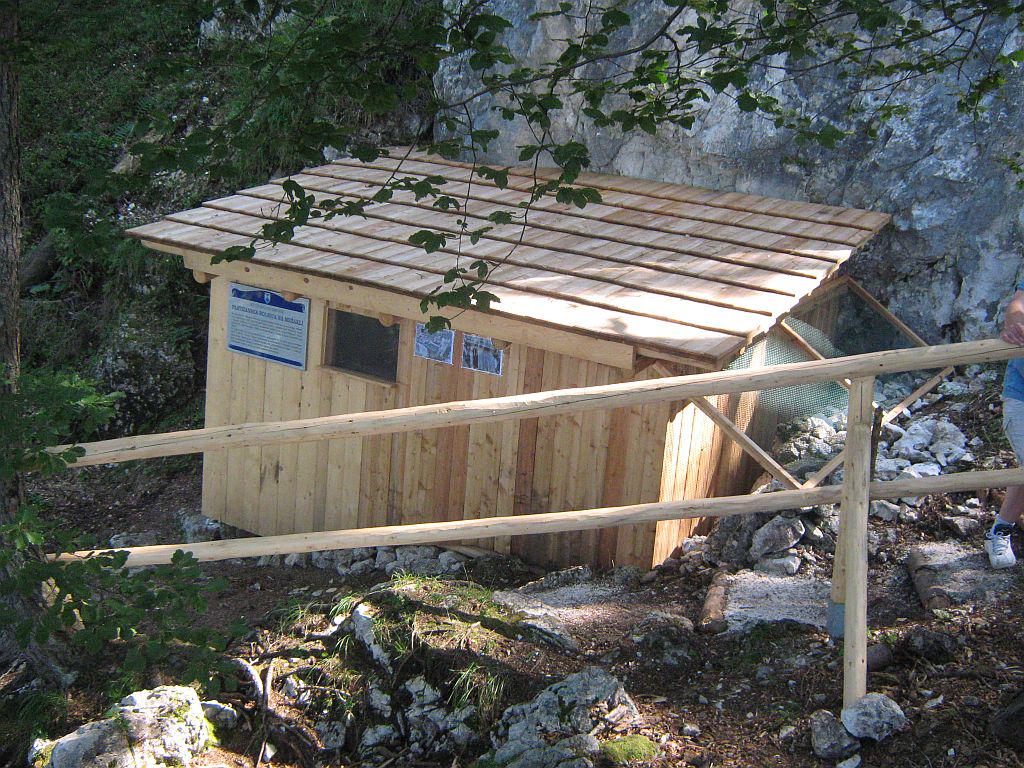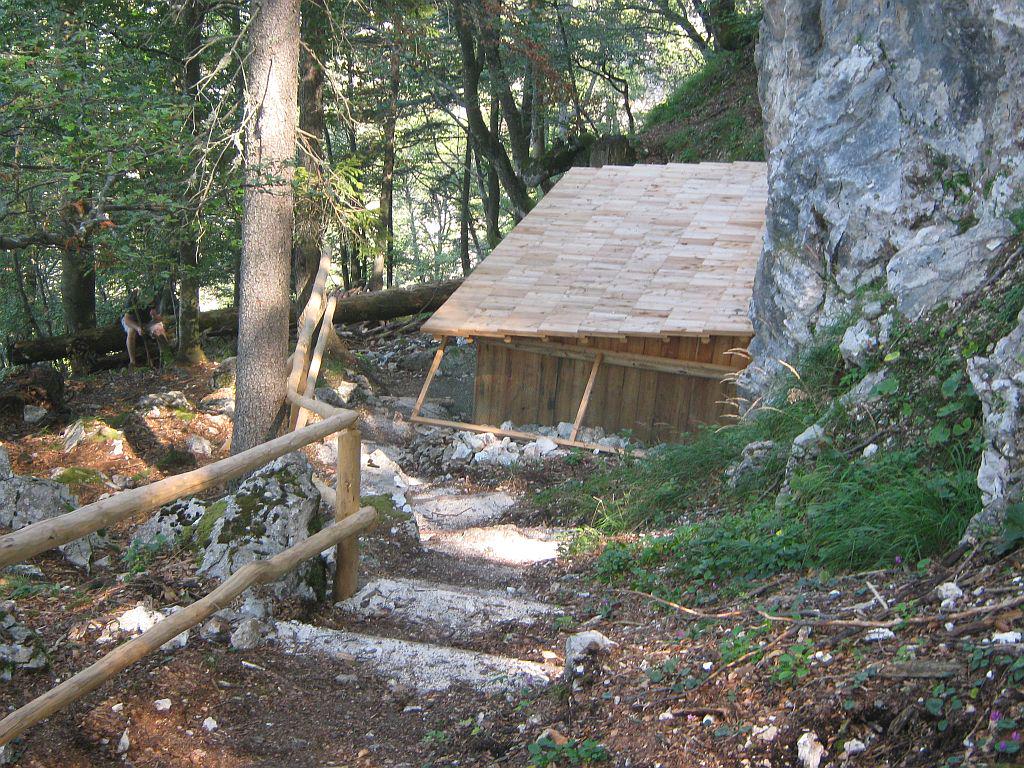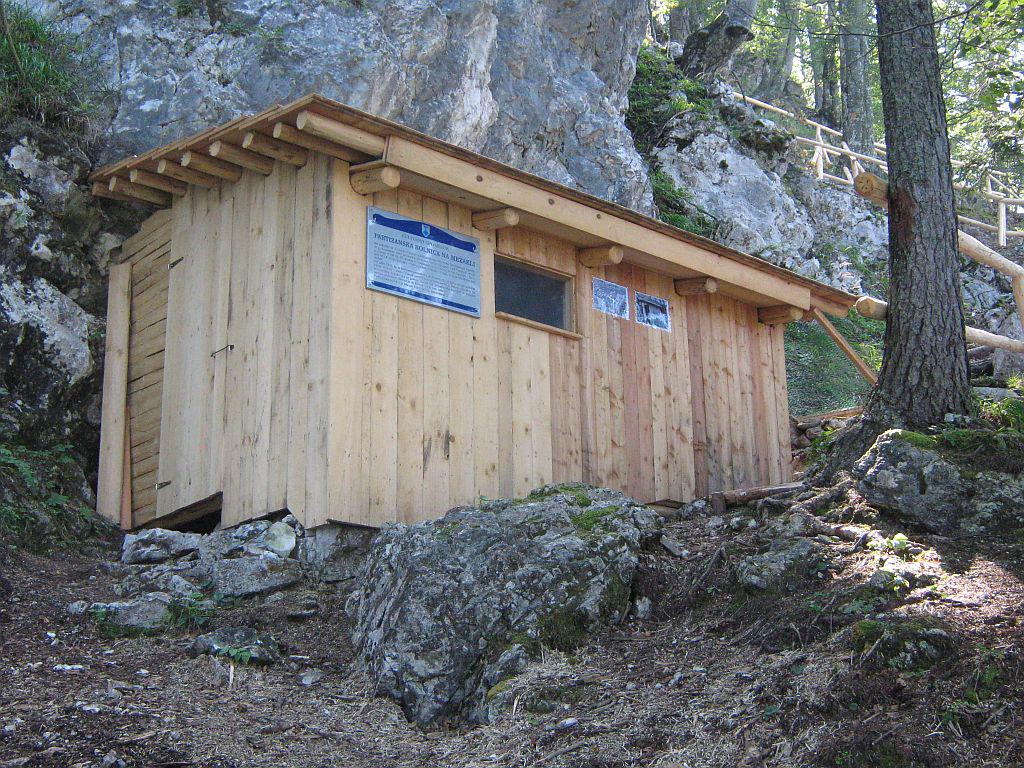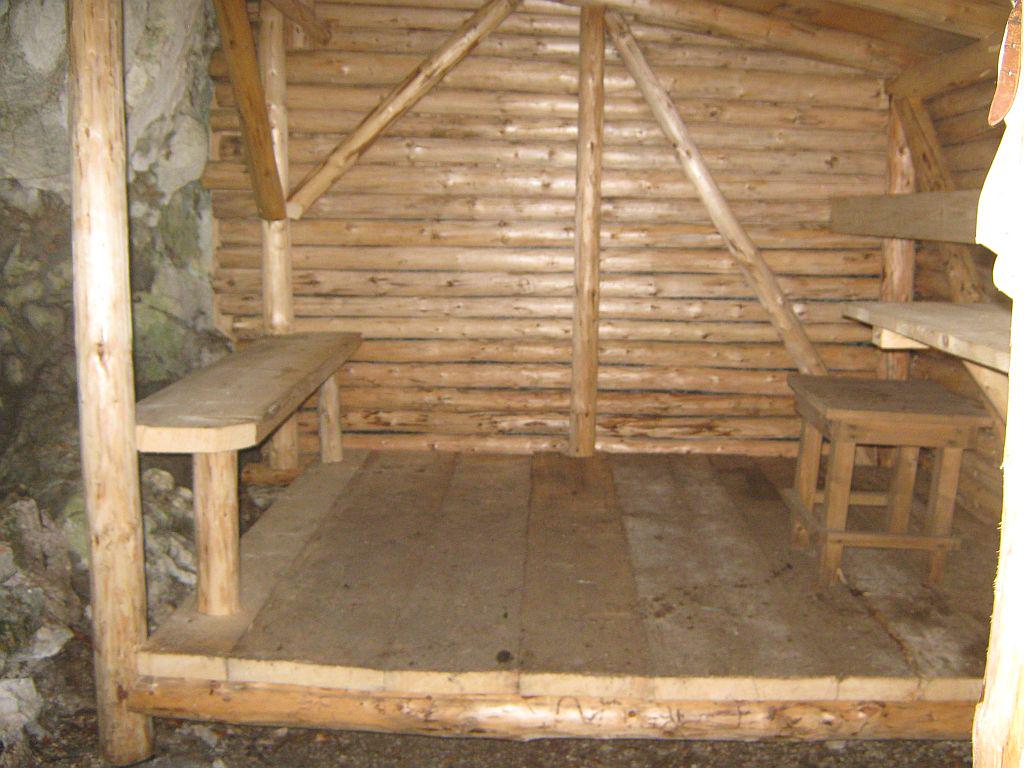
Hidden high up on a narrow ledge on a cliff above the industrial town of Jesenice, in northwestern Slovenia, is a small wooden shack. Its simple appearance is deceptive, however: During World War II, when the city below was occupied by German troops, the shack was operated by the Partisan resistance as a hospital.
The original hospital was built in December 1942 under the leadership of Edvard Pohar, a doctor and a member of the resistance. He had decided to build the structure high on a ledge where German patrols couldn’t stumble upon it and where trees kept it out of sight from the German troops in the city below. The wood used for the construction of the shack came from a mountain hut that had been used by the Partisans as a refuge and was consequently burned down by the Germans.
During its existence, the hospital treated numerous wounded soldiers. It was kept well-supplied by the people living below the cliff; many locals knew of the hospital but managed to keep its location a closely guarded secret. In 1943, the hospital was renamed "Clinic D," and was moved to a different, even more concealed spot on the cliff. In the later stages of the war, the shack also became an important post for Partisan messengers, who played a crucial role in the coordination of the resistance.
Even though the hospital operated above a German-controlled city, it was never discovered by the enemy. After the war, it was renovated several times and now serves as a historical monument. Since the most recent renovation, which took place earlier this year, access to the hospital is easier and safer than ever before --- and commemorations organized by veterans’ organizations are regularly held on the site.
Visitors are now able enter the shack, which has been furnished with benches and cloth bags that look just as they would have appeared during the war. But unlike Franja, another wartime hospital in Slovenia that is now vying for UNESCO protection, the story of the former "Clinic D" remains little known. Those who do make it to the cliffside above Jesenice, however, get an interesting glimpse into a rarely remembered chapter of Slovenia’s 20th century military history.






































































